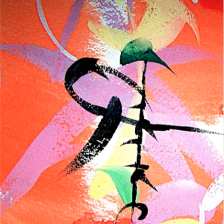
In 1939 Manhattan, neither bloody nor turbulent, newspaper reviewers saw Peterdi as an over-wrought young Surrealist—reminiscent of Soutine, only not as polite.
The Spanish Civil War had already stunned Paris. Refugees were streaming into France, artists were donating work to benefit Spanish orphans, friends were going to Spain to fight; fellow Hungarian Robert Capa was already making war photographs there. Thousands of visitors had seen Picasso’s iconic Guernica at the 1937 Paris World’s Fair.
By 1937–1939, a crescendo of departures from Paris by foreign-born artists had begun in earnest. The family of American sculptor Richard Hollander insisted he come home and were able to accommodate his idea of bringing Gabor Peterdi along as a guest. Their ship arrived in New York harbor mid-August 1939, just two weeks before Hitler would invade Poland.
notes:
The bombing of Guernica (26 April 1937) was an aerial attack on the Basque town … carried out at the behest of the Spanish nationalist government by its allies [the German and Italian air forces]. [Wikipedia]When setting out to revisit Paris in 1936, Julien Levy recalled, ‘I felt some intimation that Europe was exploding; I thought, well, I will explode with it if it happens. … I sensed that an irreversible process was begun …. To stretch back a hand, to exert some effort, would have no effect upon the inevitable events of the next two years …’
[Memoir of an Art Gallery, originally published New York: G. P. Putnam’s Sons, 1977.]

![OAHU III. 1968 watercolor on paper [Arches] 26 x 32 in.](https://i0.wp.com/gaborpeterdi.info/wp-content/uploads/2015/07/wc.Oahu-03III1969.jpg?resize=361%2C267)




